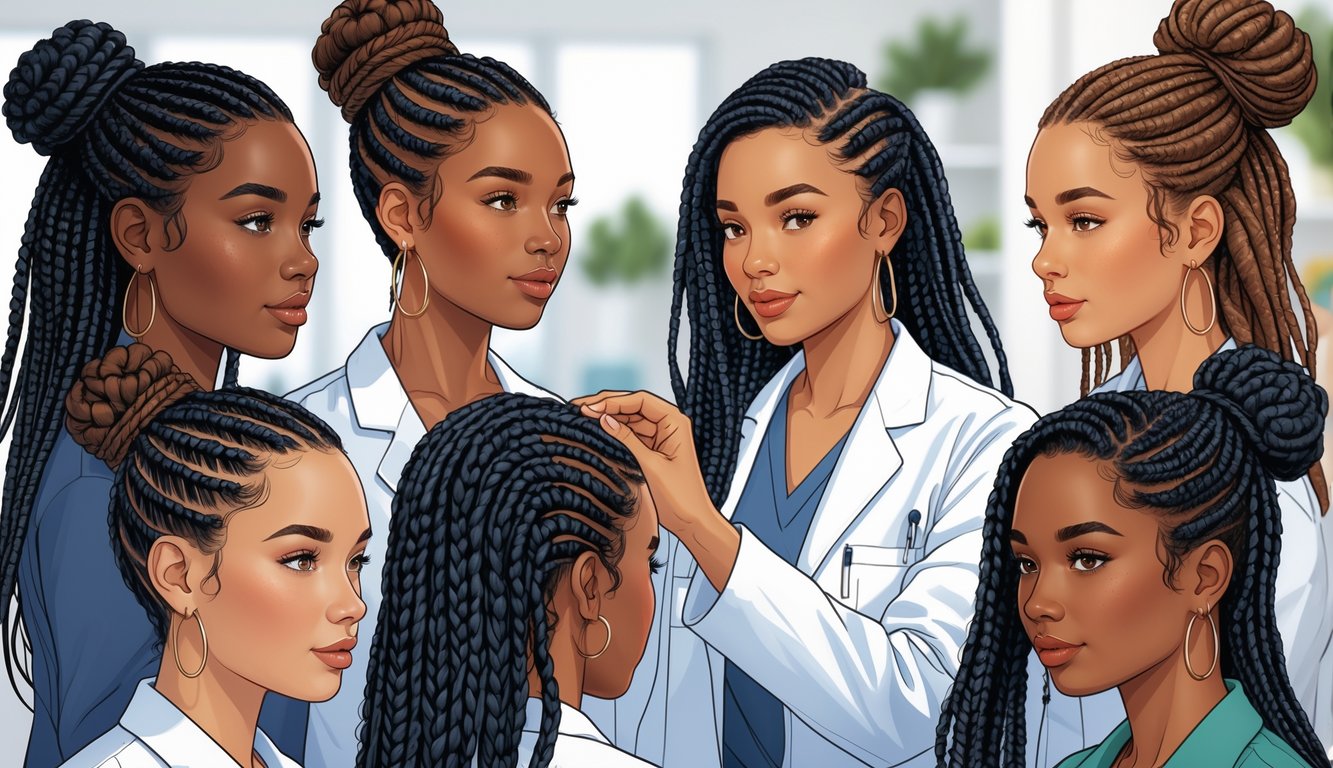
Data Collection and Research in Hair Care
If you ever want to see pure boredom, watch a dermatologist waiting for their next scalp injury case—box braids, traction alopecia, rinse and repeat. I mean, how many times do people need to fry their edges before we all admit the tight-braid thing isn’t working? I’ve seen the same mistakes since forever: too-tight patterns, synthetic hair for days, and then people act surprised when their hairline starts running away. Only actual data, not someone’s “my cousin’s hair grew six inches” story, tells you which styles really help.
Why Data Is Crucial for Best Practices
Every time I hear, “My braids never break my hair!” I just want to show them my inbox: five clients, same month, edges thinning like clockwork. If you’re not tracking what’s happening—photos, scalp checks, client notes—you’re just rolling dice with your hairline.
It’s not even drama, it’s math. One study (and yeah, I read it) found girls with tight braids or heavy weaves had triple the risk of traction alopecia (link, for the nerds). If your stylist doesn’t ask about how your scalp did last time, why are you trusting them over, like, actual evidence? I learned more from tracking my own breakage for a year than from every YouTube “expert” combined.
Recent Findings from Dermatology
You want a pattern? Dermatologists and my own scalp both say: not all braids are evil, but some are definitely worse. Looser braids, satin caps, less tension—yeah, that’s the winning formula. Go tiny and tight, lock it with hairspray? You’re just asking for trouble.
Dr. Aguh (pretty sure she’s tired of repeating herself) keeps pointing out the same thing: not all protective styles are created equal (see for yourself). The “all styles are safe” myth? Dead. Rotate styles, check your scalp, skip the heavy extensions—it’s not rocket science, but it works. The Head & Shoulders lab probably has a PowerPoint about it, minus the perfume.
Legislation and Industry Standards
Picture this: I’m scrolling headlines with one hand, untangling someone’s hair with the other, and all I see is a massive disconnect. Congress says one thing about hair discrimination, dermatologists say another about braiding, and the beauty industry is just… there, yelling about both.
How Congress Is Shaping Protective Style Policies
Lawmakers who’ve never sat through a full braid session decided to roll out the CROWN Act (yeah, it stands for something, but who cares) because, believe it or not, people lost jobs for showing up with box braids. California banned hair discrimination in 2019. That’s not ancient history. Texas and Illinois only joined in when the headlines got embarrassing.
But it’s not like we’re all protected. Tons of places still haven’t caught up, and OSHA is more worried about hard hats than your cornrows. Even with a law, if your boss thinks “presentable” means straight hair, guess who decides? Not you. Courts just keep spinning their wheels on what counts as “race-based,” and even law reviews admit they’re behind.
Professional Guidelines for Braiding Specialists
Meanwhile, every braider I know is still arguing about which technique is least likely to destroy edges—tight coils, fluffy feed-ins, whatever. Dermatologists are clear: tension alopecia is real. If you’re yanking two packs of kanekalon into a toddler’s hair, you’re the villain here. Dr. Crystal Aguh (she wrote the book, literally) says even “lightweight” knotless braids need a break—no free passes.
Nobody hands out a rulebook when you pick up a rat-tail comb. Licensing just says, “Don’t practice medicine,” which is hilarious when you’re dealing with a scalp that’s literally blistering. Industry classes? They’ll tell you to keep tools clean and avoid visible irritation—super helpful. National guidelines? Nope. It’s just a vague “looser is better, silk at night, good luck.” Every state’s got its own rules, OSHA’s got a PPE page, and most stylists are winging it. Honestly, I trust random YouTube comments and my aunt’s warnings about edges more than any official pamphlet.
Choosing the Right Protective Style for You
I never thought I’d be googling “are feed-in cornrows safer than goddess box braids,” but that’s where we’re at. At the end of the day, it’s just you, your mirror, and a scarf that keeps sliding off at night. Style matters. Likes are fake. Your edges are forever.
Personalized Recommendations Based on Hair Type
My 4C hair? It wants nothing to do with my friend’s 3A routine. She can cowash and bounce; I’m over here dodging dryness like it’s a sport. Some dermatologist told me, “Loose twists, jumbo braids—less risk.” TikTok says knotless all day, and suddenly I’m risking my edges for a trend. Classic.
Actual stylists (not just YouTubers) say tighter textures need less manipulation. I see people with flawless faux locs on the subway, but I know tight installs are a trap. Low tension or bust. Loose twists, big braids, light wigs—that’s the safe zone. If someone tells you to leave braids in for three months, they’re not paying your dermatologist. Porosity, scalp sensitivity, sweat (seriously, some of us sweat like crazy)—all that matters way more than any influencer admits.
Working With Professionals
Finding a pro who listens? Feels impossible. I spent an hour explaining my scalp can’t handle synthetic hair, and the stylist still reached for the kanekalon. Why? You need someone who actually knows scalp science, not just what’s trending.
A licensed braider or trichologist? Total upgrade. I started grilling stylists about tension headaches and janky weaves. The good ones check your scalp before they even start. One pro told me, “Leave-in conditioner under cornrows kills the itch. Rehydrate weekly.” Finally, someone who gets it.
A real pro will warn you about tension bumps before they become permanent. Some even take before/after scalp pics—like, actual data. It’s like tracking your blood pressure, but for your hairline. If your braider never mentions edge protection, run. Seriously.



